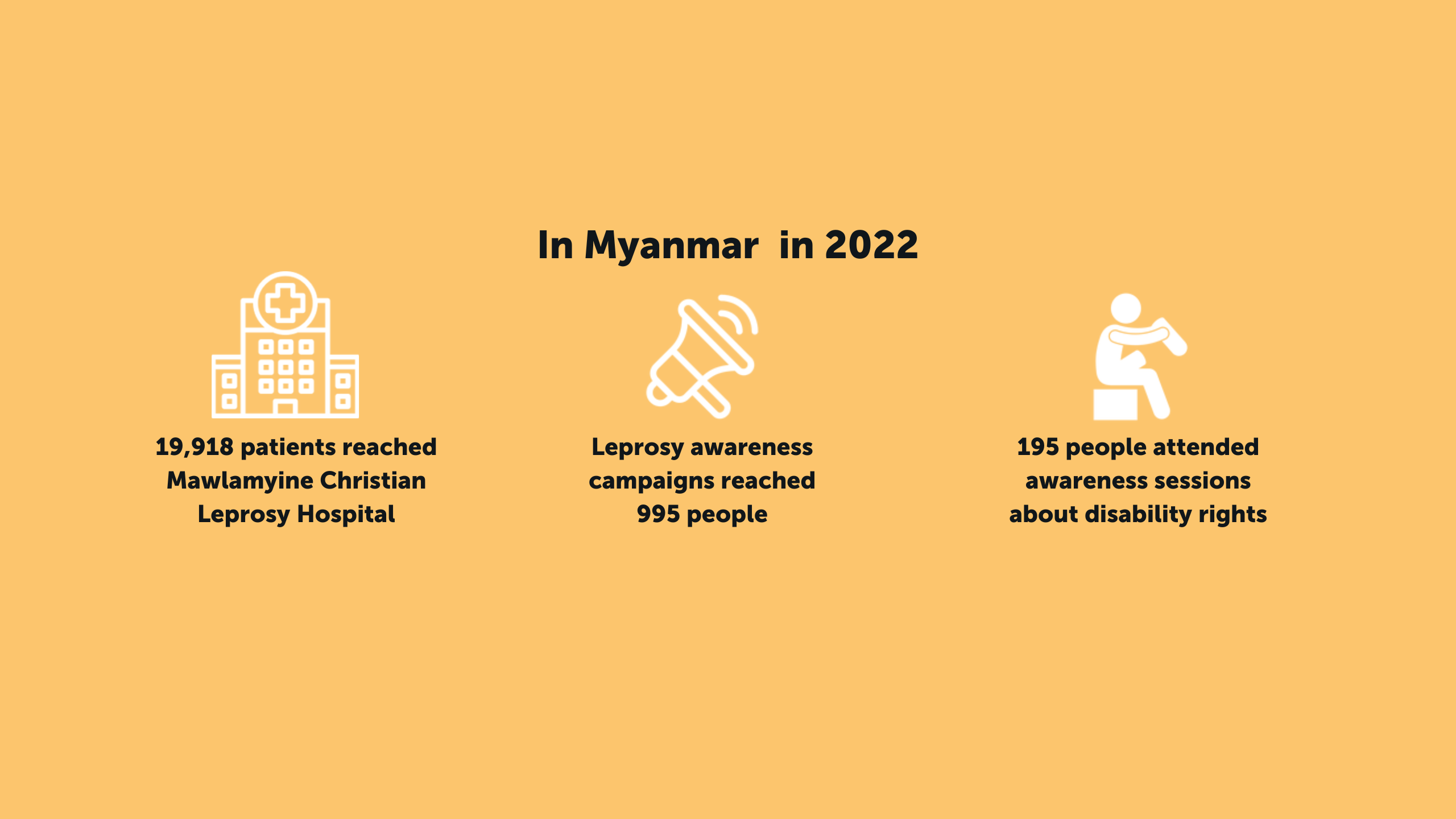Places of healing and refuge
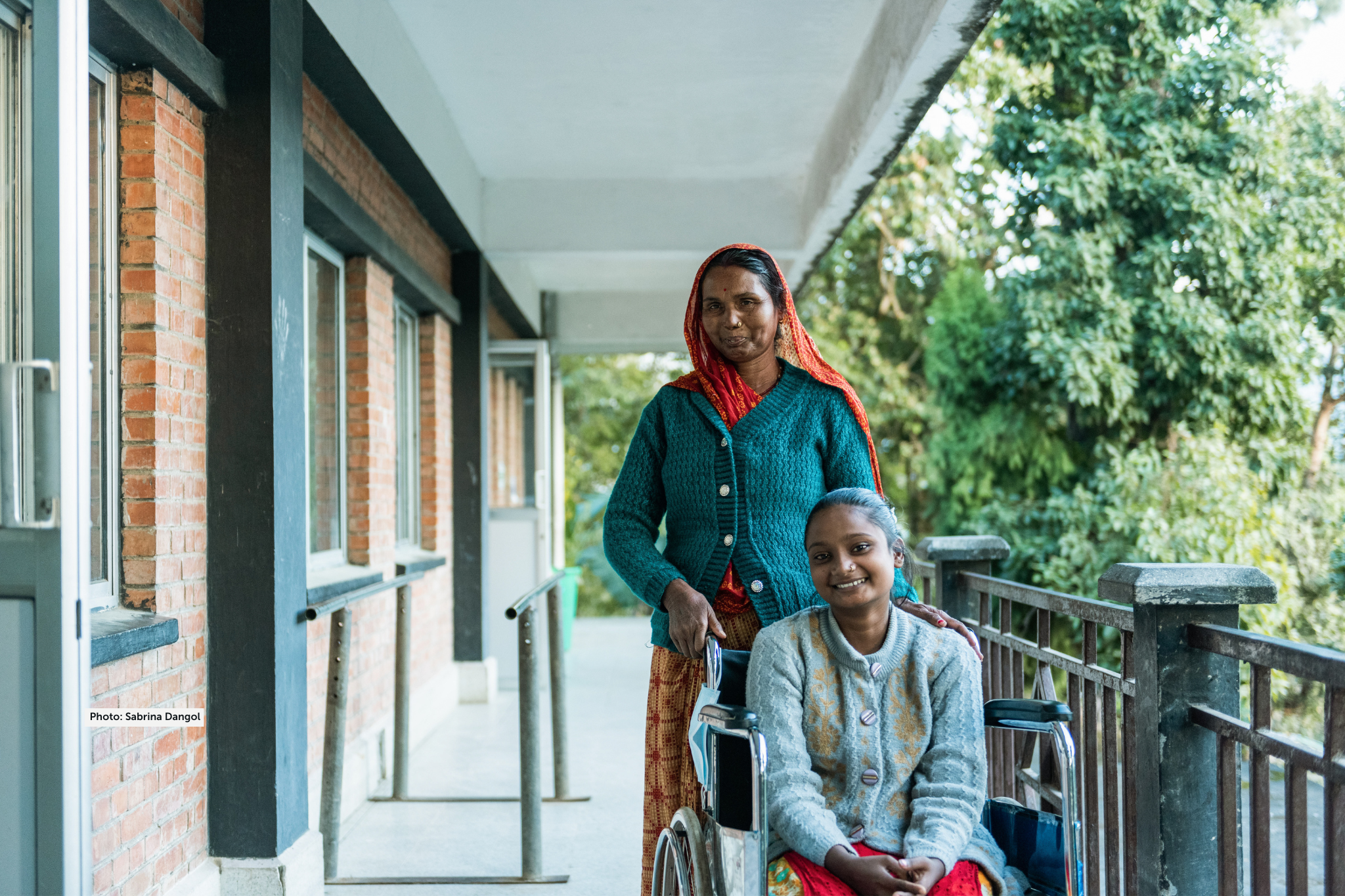
Life-saving care for an entire community in Nepal
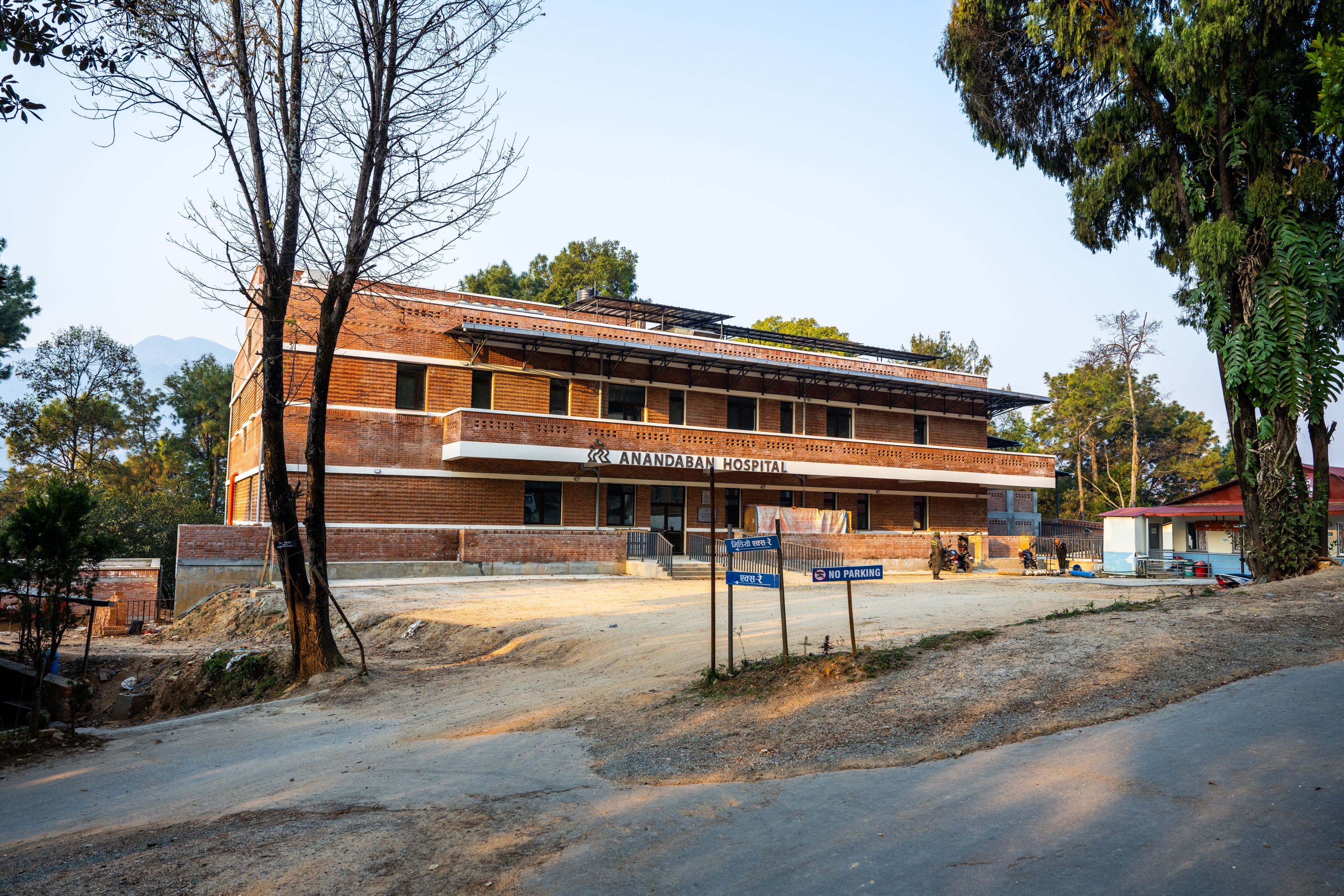
We have some exciting news to share with you: a new trauma and emergency centre has opened at our flagship hospital in Nepal.
The new state-of-the-art facility at Anandaban Hospital houses A&E and paediatric departments. There is also a new maternity centre and a critical care unit.
Back in 2015, Nepal suffered a devastating earthquake which killed 9,000 people. It decimated hundreds of villages and many of the buildings on the Anandaban site were severely damaged.
Our Nepal team worked with communities to rebuild both homes and lives across the country. Then we turned our focus to repairing Anandaban Hospital and, rather than simply replacing what had been damaged, our team began to dream.
With the help of our partner Article 25, a specialist London-based architectural NGO, designs were drawn up for a brand-new, earthquake-proof hospital. This would, of course, be a hospital to serve people affected by leprosy. But, by dreaming big, it would be designed to meet the medical needs of the whole community.
The idea of the trauma and emergency centre was born. Then, it was your incredible generosity that saw these ambitious plans for a new centre become a reality.
Above: The new trauma and emergency centre at Anandaban will provide much-needed services for people living in the Kathmandu Valley and beyond.
Left: The opening ceremony for the centre.
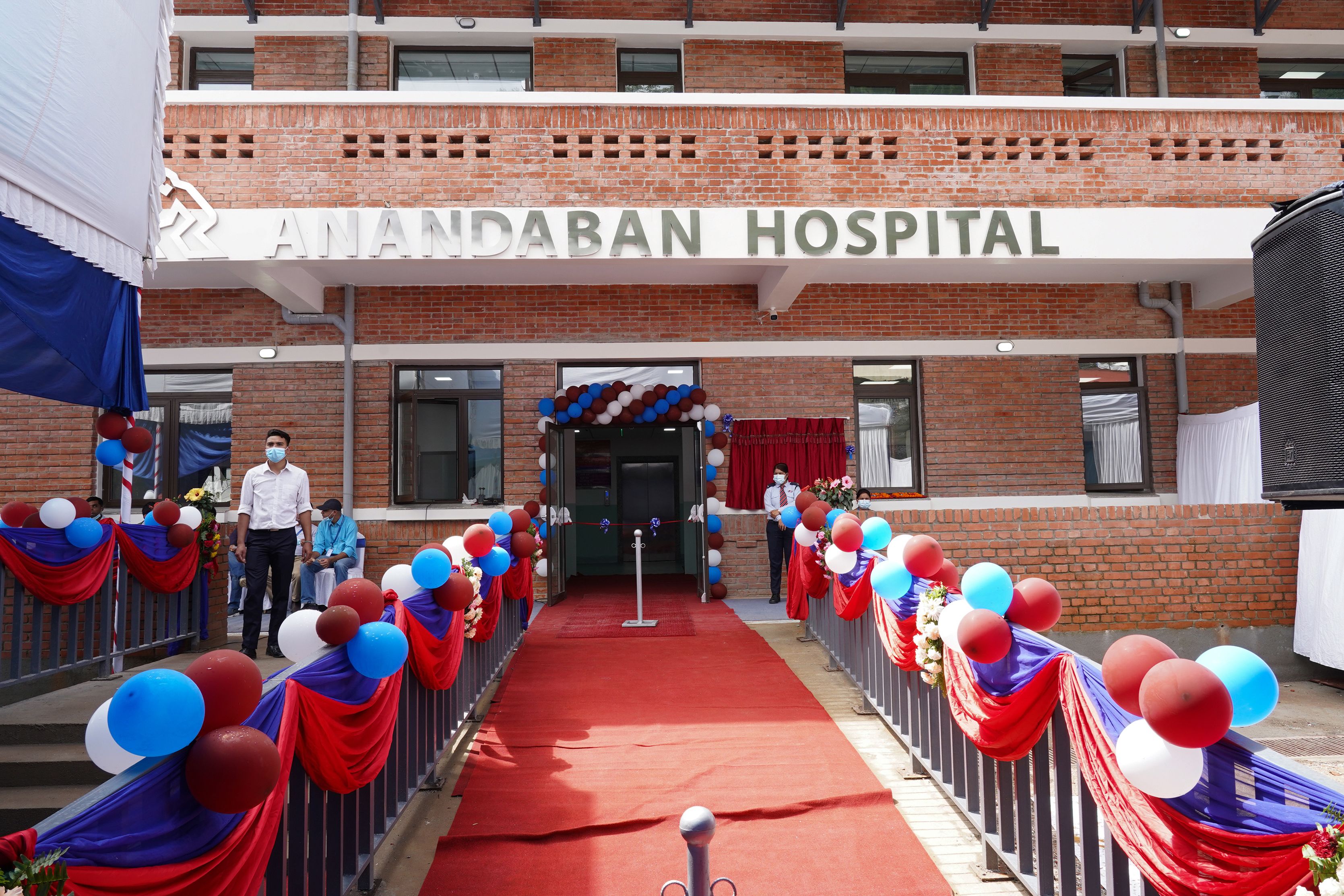
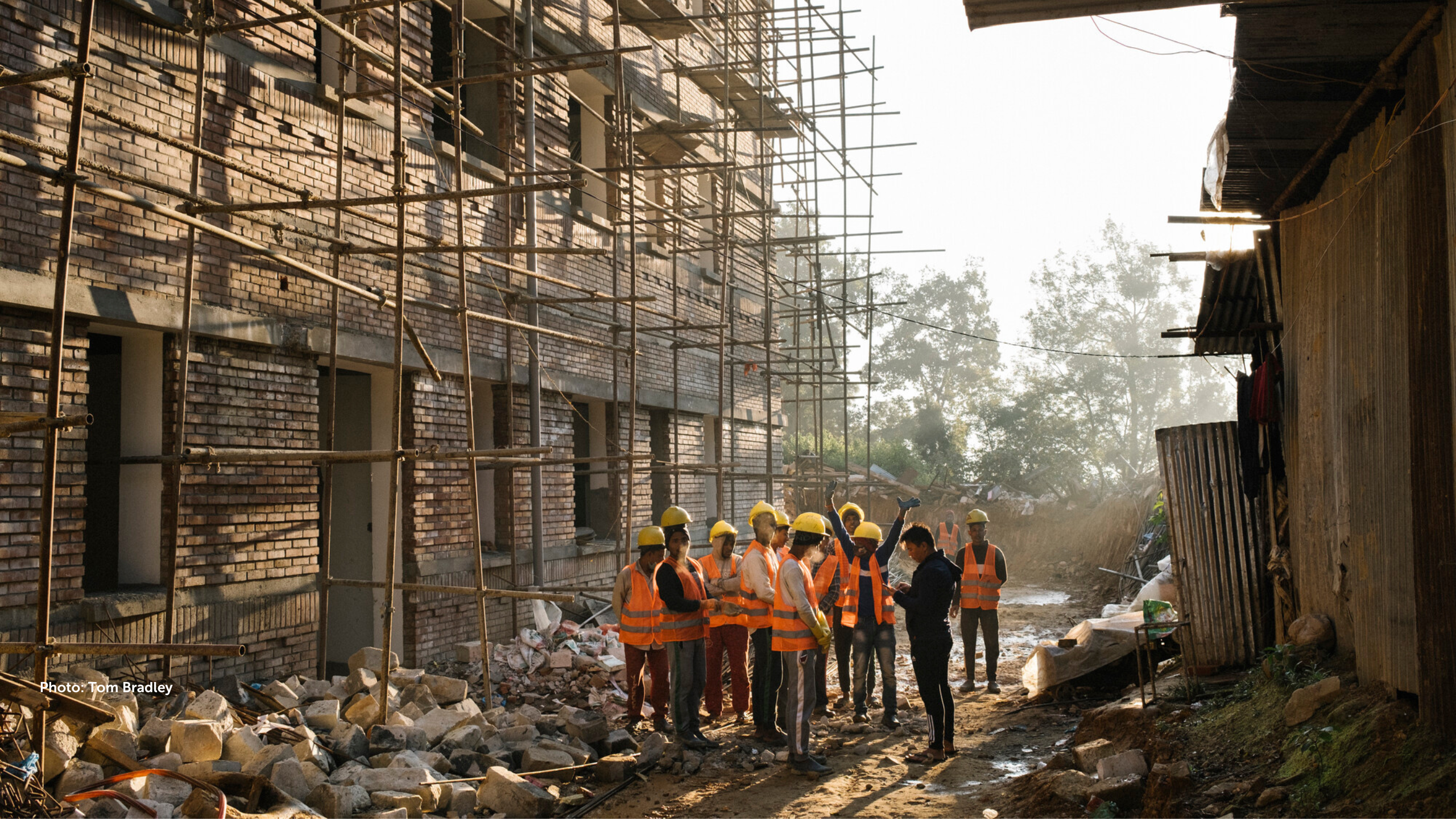
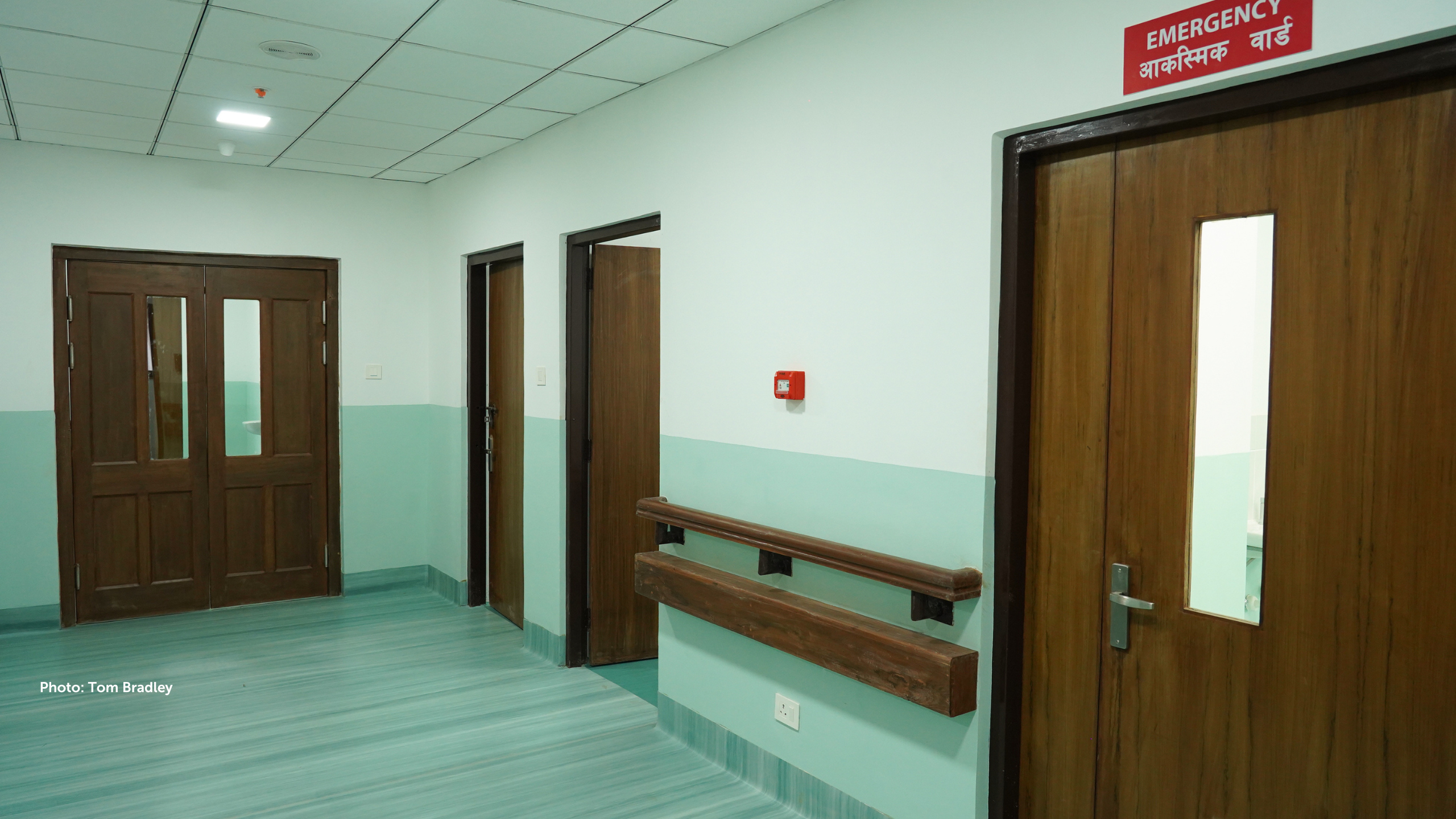


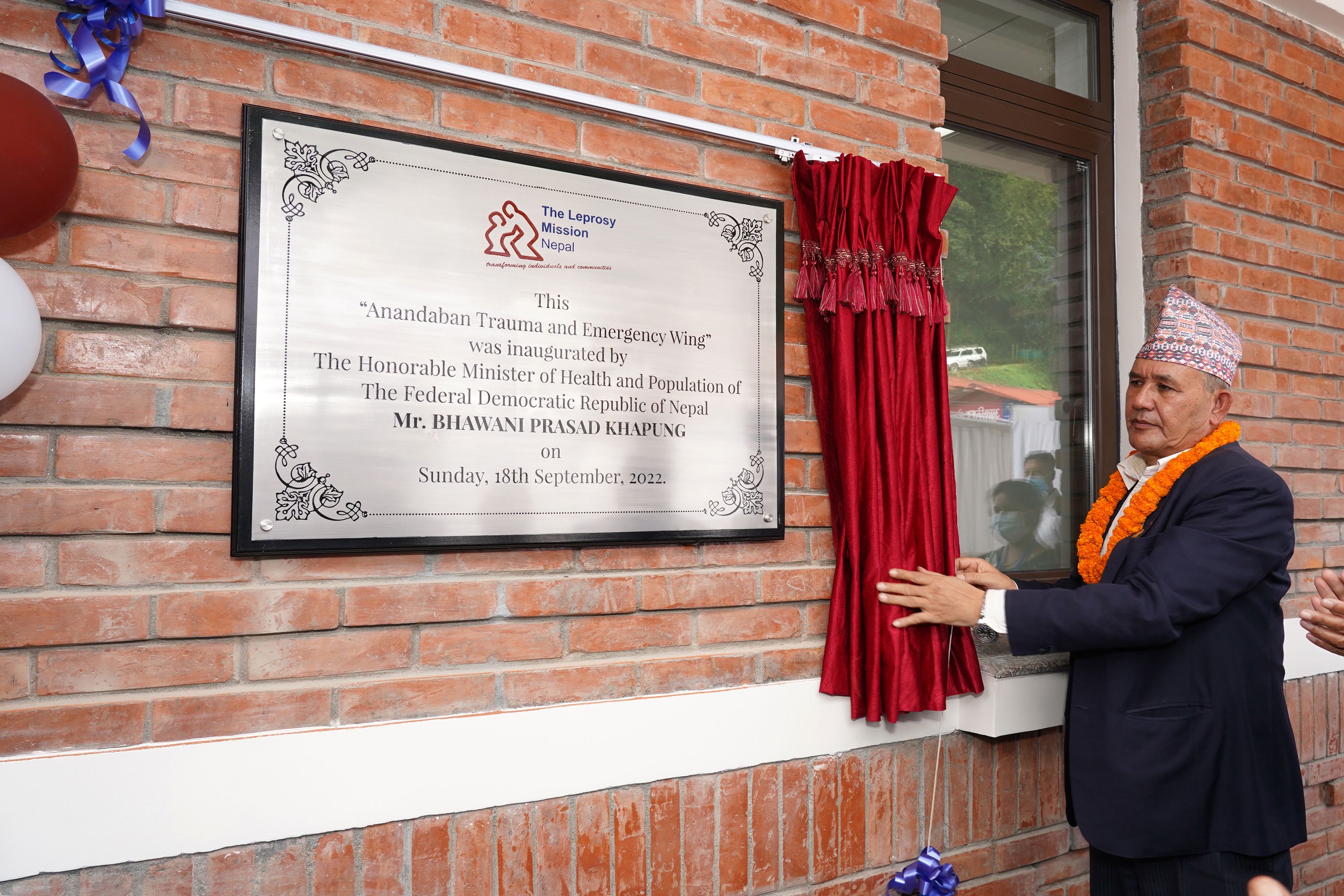
Your amazing response to the Heal Nepal campaign enabled our team to achieve its aim of finding and curing thousands of people with leprosy across the country, and your kindness meant that we could go a step further and build the new centre at Anandaban Hospital.
Money from American Leprosy Missions and US Aid helped to fund the centre, and a grant from the Haverstock Charitable Trust in Guernsey paid for the building of four wards. Guernsey’s Overseas Aid & Development Commission also provided an eco-friendly wastewater system.
In September, Nepal's Minister of Health and Population opened the new trauma and emergency centre. At the ceremony, Bhawani Prasad Khapung said:
“This has been a great occasion, enabling me to learn about Anandaban Hospital. I’m very impressed by this new facility.
This hospital is fundamental, not just for people affected by leprosy but for all the people of the area. I am extremely grateful to the donors for their support.”
People affected by leprosy will always be at the very heart of our work and we are proud to expand our services to meet the needs of the surrounding community as well. We are also delighted to continue our partnership in Nepal with Article 25. The charity has designed the Anandaban Research Centre and we are excited to share that construction will begin in the summer.
Thank you for making another incredible new facility at Anandaban Hospital possible!
Above: Before and after the construction of the new trauma centre.
Right: Nepal's Minister of Health and Population, Bhawani Prasad Khapung, was proud to open the new trauma and emergency centre.
A refuge in a time of crisis in Myanmar
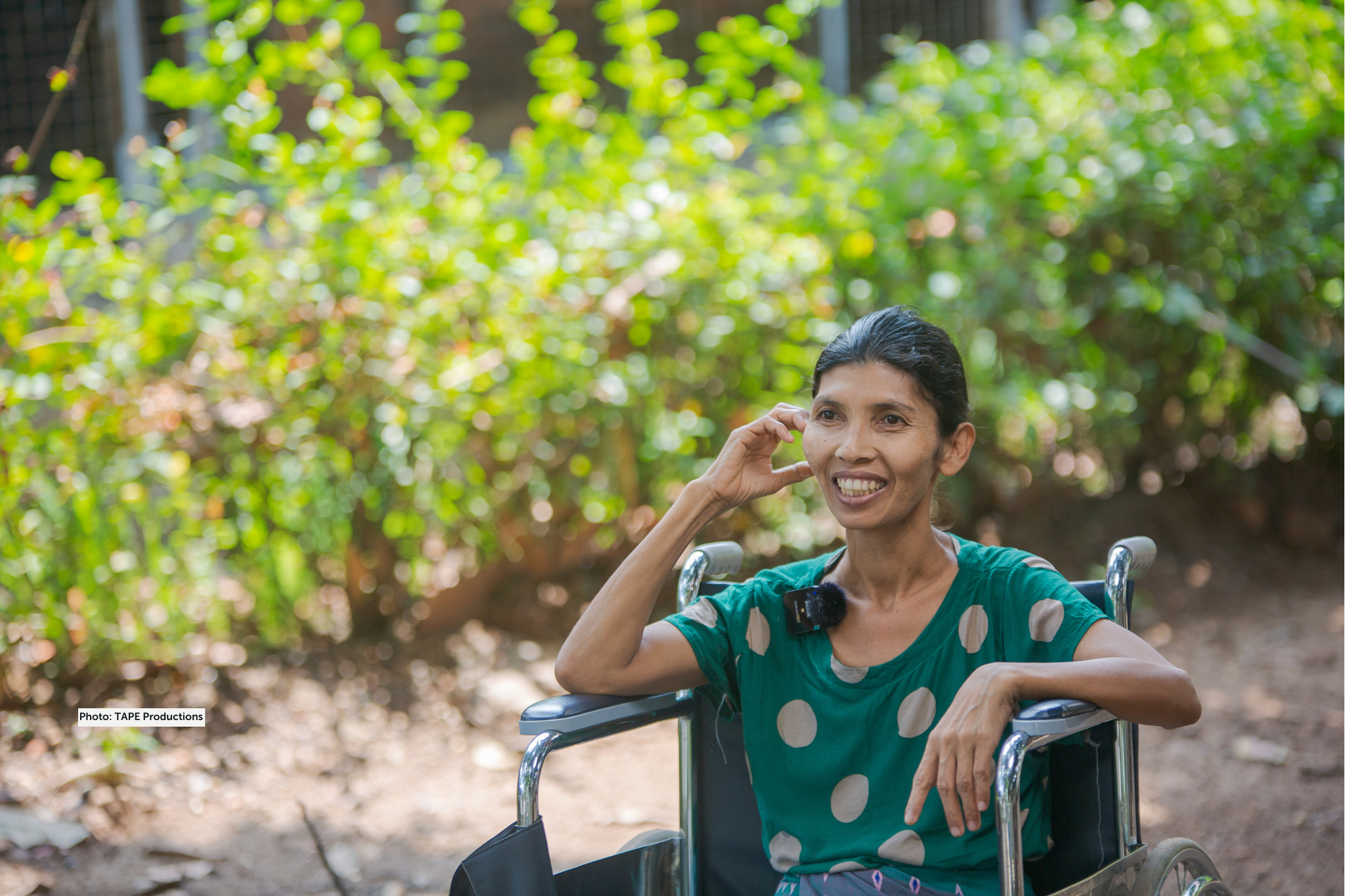
In 2022, Myanmar was a country deep in crisis. Its people had been plunged into a state of emergency after the military coup in February 2021. Bloody violence erupted on the streets as the armed forces opened fire on protesters.
The United Nations accused the military of war crimes. Their figures show that over a million people have been internally displaced since the return to military rule. A total of 70,000 refugees have also fled the country.
In the height of the conflict, there was a desperate shortage of essential items including medicines, and many government hospitals closed their doors. Against a backdrop of gunshots, many people were too afraid to make even the shortest of journeys.
People's lives remained in a frozen state of emergency, yet the effects of leprosy did not stop. Those affected by this disease still needed the cure and treatment for ulcers and complications. The burden of leprosy grew ever heavier.
Mawlamyine was the only hospital in Myanmar offering leprosy treatment last year. Government hospitals either closed or stopped their leprosy services.
It was, therefore, amazing that 19,918 patients managed to reach Mawlamyine in 2022. It was a struggle for many, as those affected by leprosy are always among the poorest. As well as finding money to travel, they risked their lives to reach the hospital.
Above: Daw Pu Lay outside Mawlamyine hospital, the only hospital offering leprosy treatment in Myanmar last year.
Right: Ko Min Aung got treatment for leprosy too late, and needed an amputation and reconstructive surgery. Now, he urges people to seek treatment for leprosy quickly.
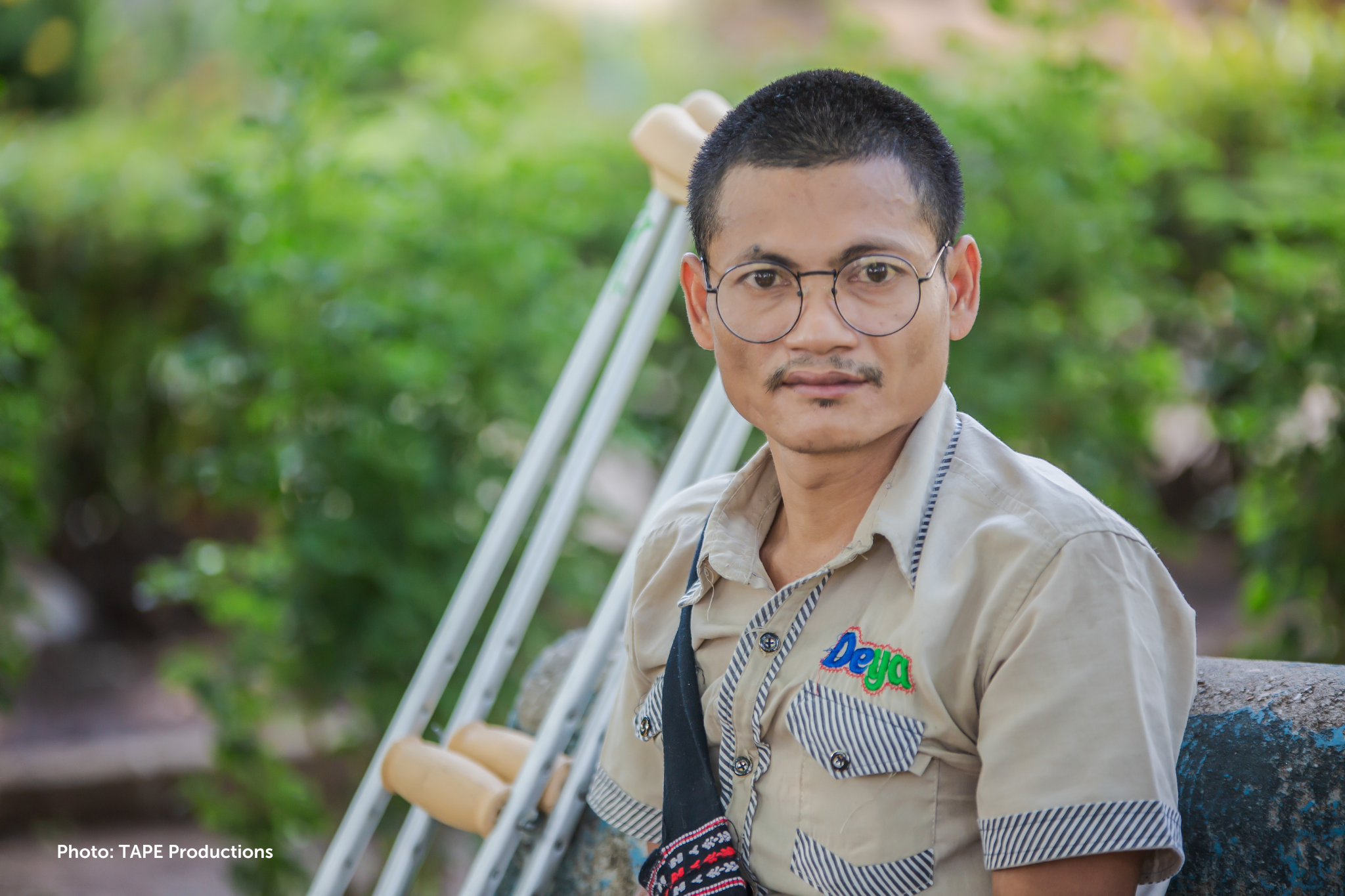
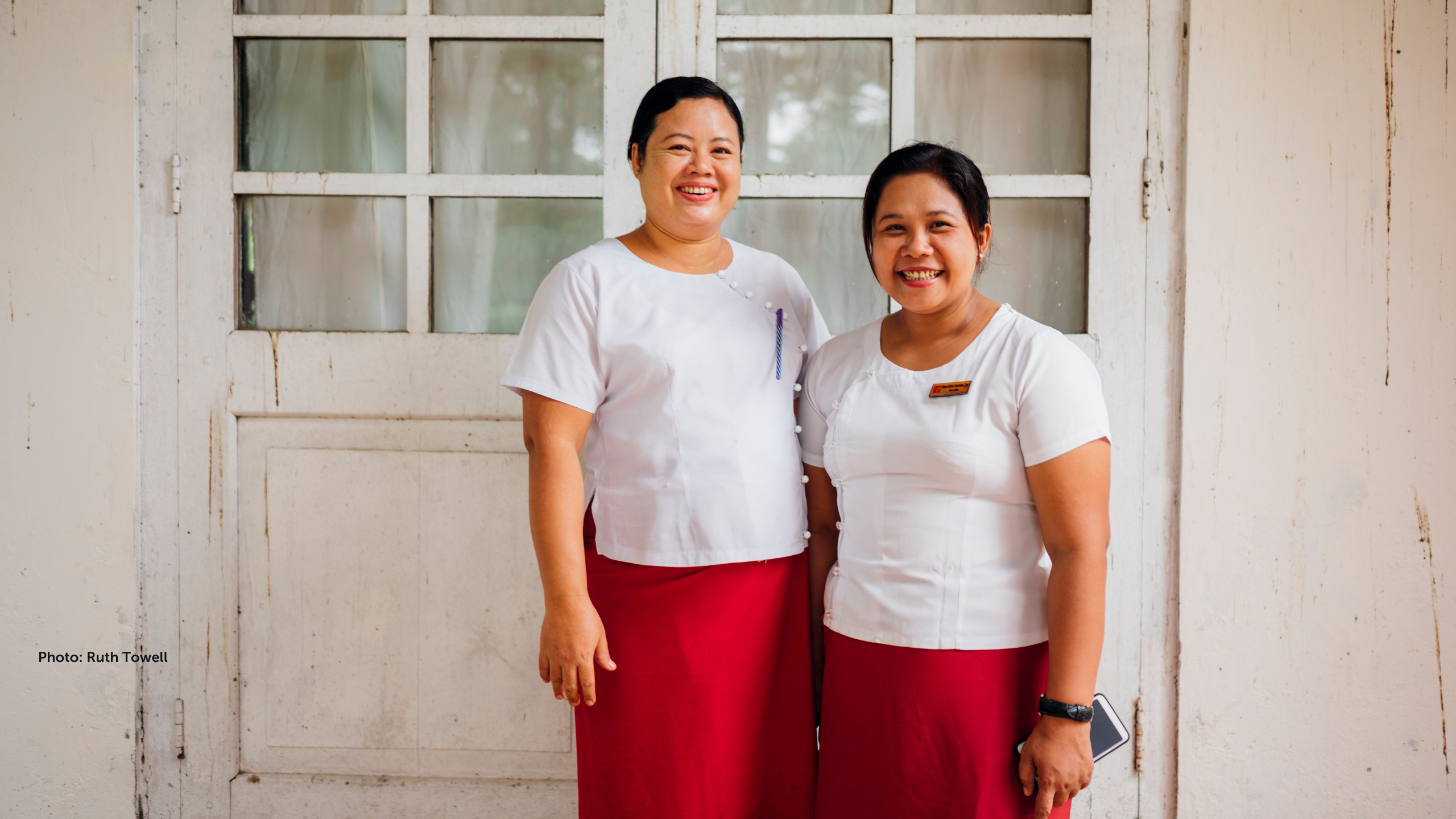
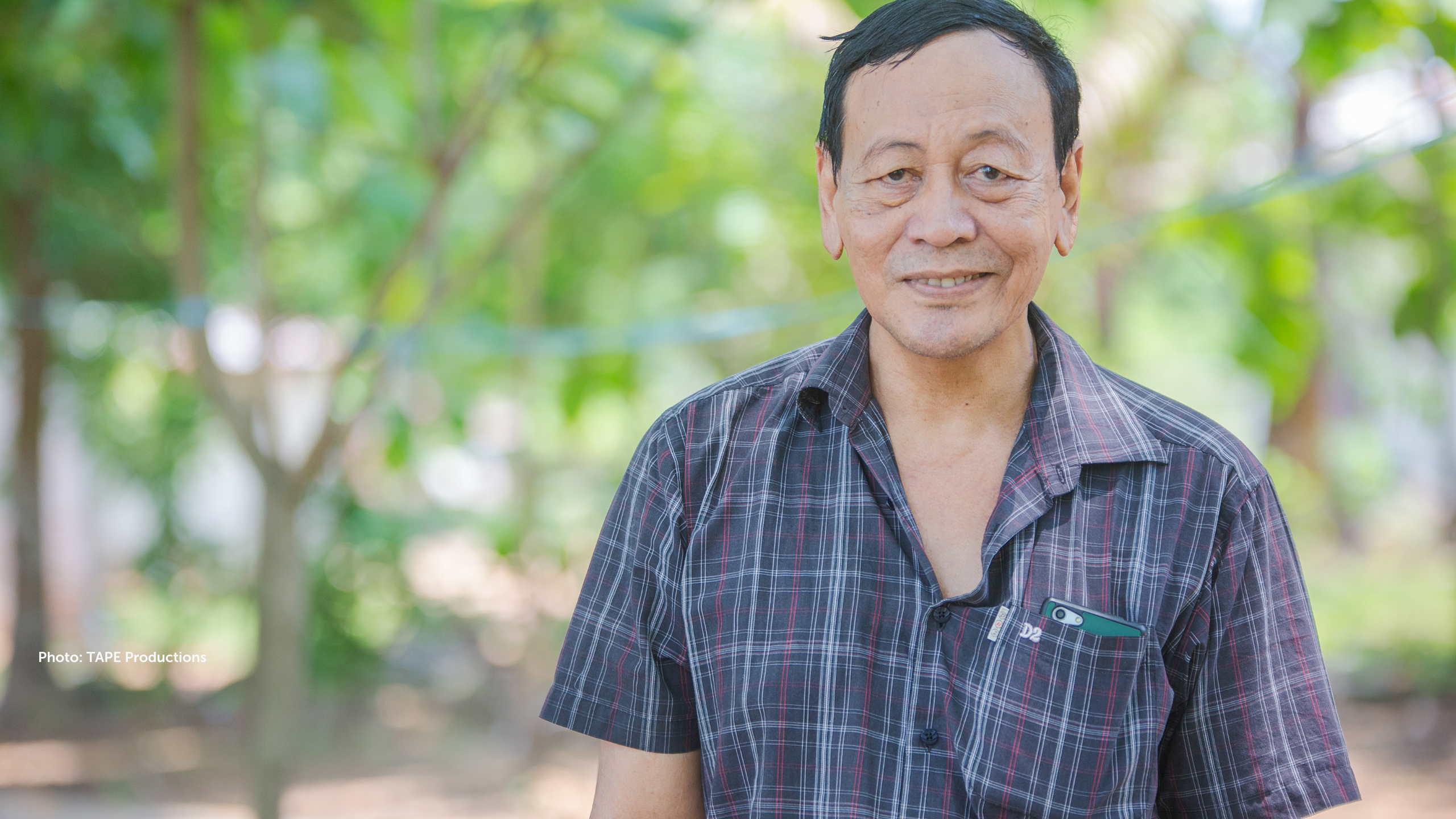



Daw Pu Lay's story
Daw Pu Lay was one of 606 inpatients cared for at Mawlamyine last year. While Daw risked her life by making the five-hour journey, the treatment she received in the hospital potentially saved it. The mother-of-two would have lost her leg, or worse, if she had not reached Mawlamyine when she did.
Daw Pu Lay is a hard-working mum who, like so many, always puts her family's needs above her own.
When she suffered a burn on her foot which turned into an open sore, she simply ignored it. She couldn’t afford to spend time away from her shop or her children to seek treatment. For a while, the sore didn’t bother her. She felt no pain or discomfort as leprosy had damaged her nerves and robbed her of all feeling in her feet.
However, at the worst possible time and in the midst of the national crisis, the sore became severely infected. Daw Pu Lay realised it was a medical emergency and tried to seek help at her nearest hospital, but she was turned away. She was told to travel to Mawlamyine Christian Leprosy Hospital. Nowhere else could treat her.
Daw Pu Lay told us about her experience at Mawlamyine:
"I am so thankful for the way they treat us. I pray for the health and wellbeing of the staff every night. They are so very good to us."
Thank you for being there for Daw Pu Lay, and many others like her. You have stood by them in some of the darkest moments of Myanmar's history and of their own lives.
Above right: Daw Khin Sandar and Naw Htee Khy are nurses at Mawlamyine Hospital. Without this hospital, many people affected by leprosy would not be able to get medical care they need.
Above left: Stanley struggled with his mental health and stigma after leprosy affected his feet. He recovered at Mawlamyine Hospital and is grateful for the love he has felt there.
Left: Daw Pu Lay is thankful for the medical care you gave her at Mawlamyine Christian Leprosy Hospital.
